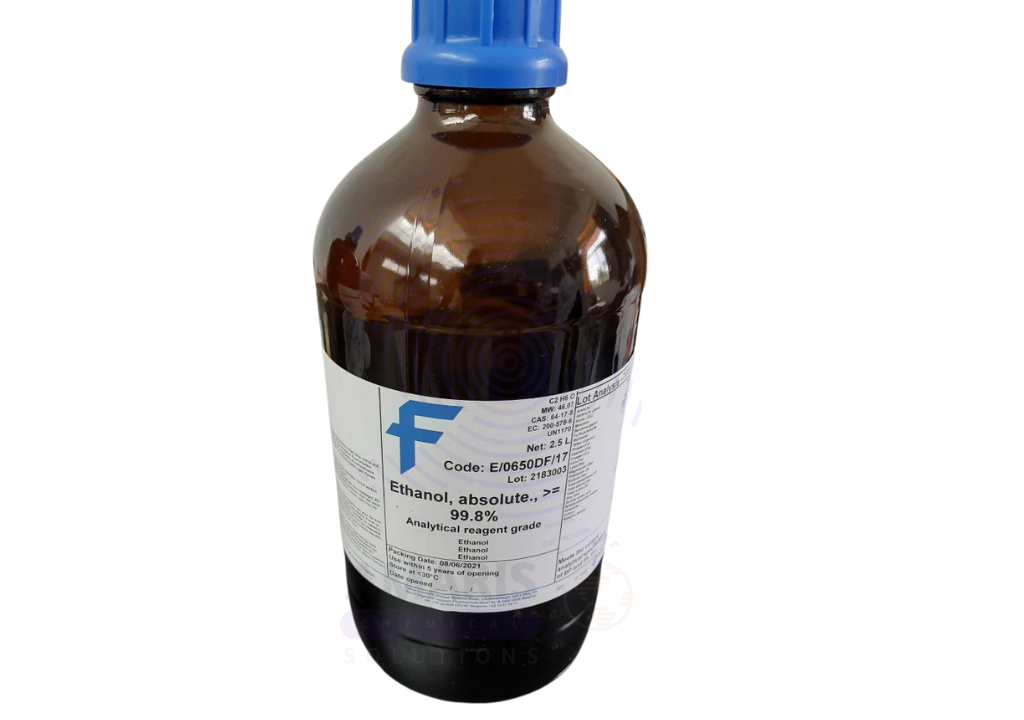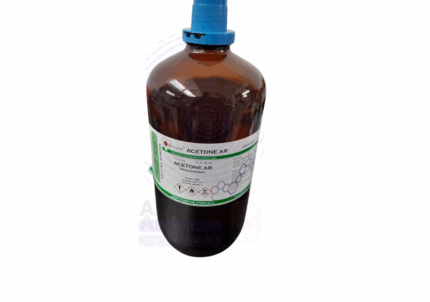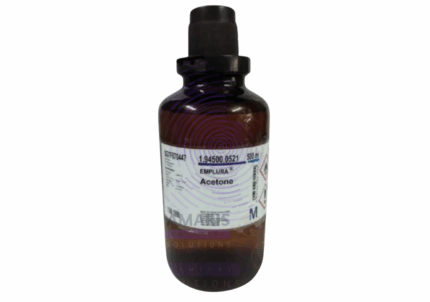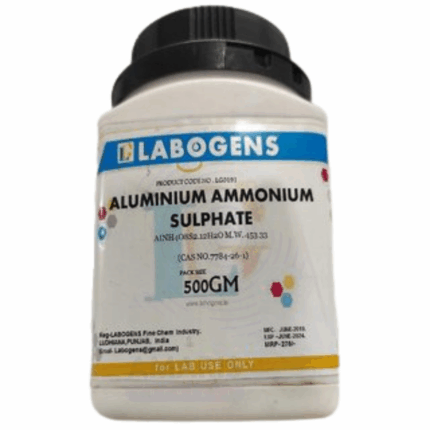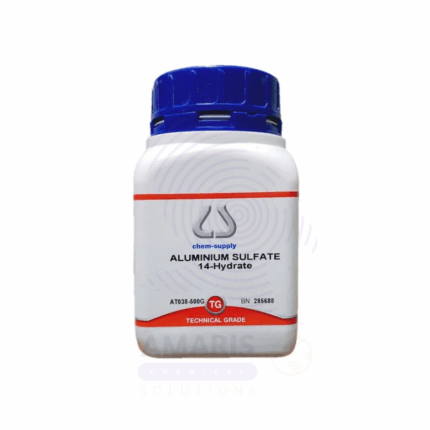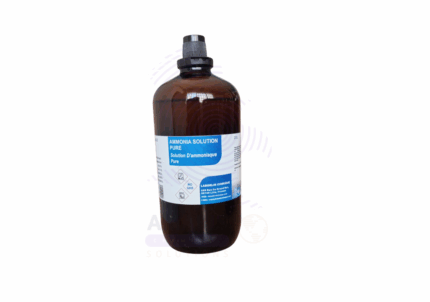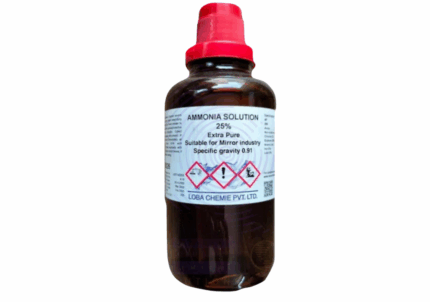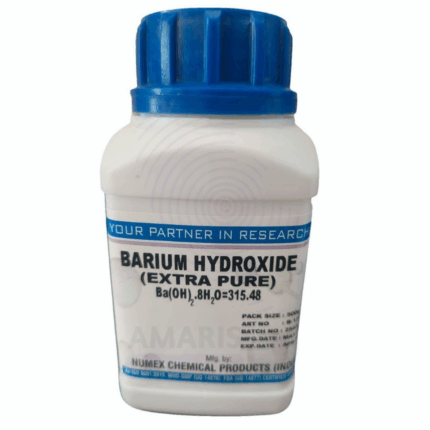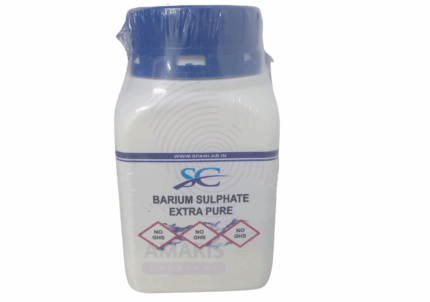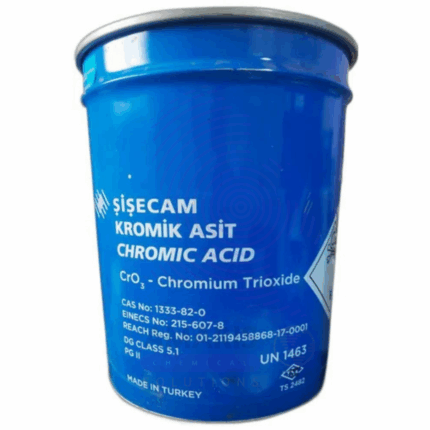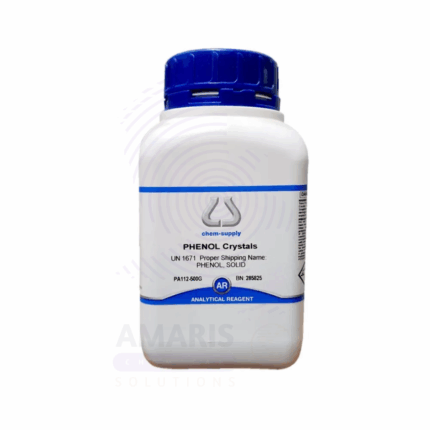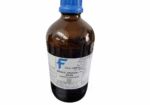
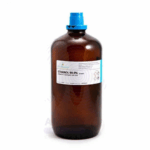

Ethanol Extra pure
$ 31.17 Original price was: $ 31.17.$ 31.06Current price is: $ 31.06.
Ethanol Extra pure Extra Pure is a highly purified grade of ethyl alcohol widely used in laboratory, pharmaceutical, cosmetic, and analytical applications. At 99.8% purity, it contains minimal water, making it ideal for dehydration reactions, chromatography, spectroscopy, and cleanroom procedures. It serves as a universal solvent, disinfectant, and intermediate in chemical synthesis. This extra pure grade ensures low impurity levels, making it suitable for precision scientific experiments and pharmaceutical formulations. It is volatile and flammable, so it should be stored tightly sealed, in a cool, well-ventilated area, away from ignition sources.
Ethanol Extra pure
Primary Uses
- Solvent for chemical reactions and extractions:
Widely used to dissolve polar and some nonpolar compounds in synthesis, chromatography, and sample preparation. - Disinfectant and sterilizing agent:
Effective against a broad spectrum of microorganisms; used to sterilize lab surfaces, instruments, and biological samples. - Preservative for biological specimens:
Used in histology and microbiology to fix and preserve tissue or microbial cultures. - Reagent in organic synthesis:
Acts as a reactant in esterification, oxidation, and other organic transformations.
Secondary Uses
- Cleaning agent for lab glassware and surfaces:
Removes grease, oils, and residues without leaving water marks. - Dehydrating agent in sample processing:
Assists in water removal during tissue processing or preparing samples for microscopy. - Component in buffer and extraction solutions:
Helps maintain solution properties in biochemical assays and DNA/RNA extraction. - Calibration and density reference in instruments:
Used to calibrate alcoholmeters and validate ethanol concentration in QC labs.
| PACK SIZE |
2.5 Litres Glass bottle |
|---|
1. Basic Identification Attributes
- Chemical Name: Ethanol
- Synonyms: Ethyl alcohol, Alcohol, Grain alcohol
- Chemical Formula: C₂H₅OH
- CAS Number: 64-17-5
- Grade: Extra Pure (Laboratory Grade, 99.8%)
- Appearance: Clear, colorless, volatile liquid
- Odor: Characteristic alcoholic odor
2. Physical & Chemical Properties
- Molecular Weight: 46.07 g/mol
- Purity: 99.8%
- Boiling Point: 78.37 °C
- Melting Point: –114.1 °C
- Flash Point: 13 °C (closed cup)
- Density: 0.789 g/cm³ at 20 °C
- Solubility: Miscible with water and most organic solvents
3. Safety & Hazard Attributes
- GHS Classification:
- Flammable Liquid (Category 2)
- Eye Irritation (Category 2A)
- Hazard Statements:
- H225: Highly flammable liquid and vapor
- H319: Causes serious eye irritation
- PPE Requirements:
- Safety goggles
- Protective gloves
- Flame-resistant lab coat
- Proper ventilation or fume hood
- First Aid Measures:
- Inhalation: Remove to fresh air, seek medical attention if unwell
- Skin Contact: Wash with soap and water
- Eye Contact: Rinse with water for several minutes
- Ingestion: Do NOT induce vomiting, seek medical advice
4. Storage & Handling Attributes
- Storage Conditions:
- Store in a cool, well-ventilated, flammable chemical cabinet
- Keep away from ignition sources and direct sunlight
- Use explosion-proof electrical equipment if needed
- Handling Notes:
- Handle in a fume hood when in bulk
- Use grounding and bonding for bulk transfers
5. Regulatory & Compliance Attributes
- EC Number: 200-578-6
- UN Number: UN 1170
- Hazard Class: 3 (Flammable Liquid)
- Packing Group: II
- REACH Status: Registered
6. Laboratory Applications
- Primary Uses:
- Solvent for organic and inorganic compounds
- Disinfectant and antiseptic
- DNA/RNA precipitation in molecular biology
- Chromatography and spectroscopic sample prep
- Secondary Uses:
- Cleaning of lab glassware
- Histology and tissue dehydration
- Fuel and combustion experiments
SAFETY PRECAUTIONS
- Highly flammable liquid and vapor
- Use in well-ventilated areas and keep away from ignition sources
- PPE: Gloves, goggles, lab coat
- Storage:
- Store in a cool, well-ventilated place
- Keep container tightly sealed and away from heat
FIRST AID MEASURES
- Inhalation: Move to fresh air, provide oxygen if breathing is difficult
- Skin Contact: Rinse with water; remove contaminated clothing
- Eye Contact: Rinse with water for at least 15 minutes
- Ingestion: Rinse mouth, do not induce vomiting—seek medical help


 Preservatives(food)
Preservatives(food) Flavor Enhancers
Flavor Enhancers Acidulants
Acidulants Sweeteners
Sweeteners Antioxidants
Antioxidants Colorants(food)
Colorants(food) Nutraceutical Ingredients (food)
Nutraceutical Ingredients (food) Nutrient Supplements
Nutrient Supplements Emulsifiers
Emulsifiers
 Collectors
Collectors Dust Suppressants
Dust Suppressants Explosives and Blasting Agents
Explosives and Blasting Agents Flocculants and Coagulants
Flocculants and Coagulants Frothers
Frothers Leaching Agents
Leaching Agents pH Modifiers
pH Modifiers Precious Metal Extraction Agents
Precious Metal Extraction Agents
 Antioxidants(plastic)
Antioxidants(plastic) Colorants (Pigments, Dyes)
Colorants (Pigments, Dyes) Fillers and Reinforcements
Fillers and Reinforcements Flame Retardants
Flame Retardants Monomers
Monomers Plasticizers
Plasticizers Polymerization Initiators
Polymerization Initiators Stabilizers (UV, Heat)
Stabilizers (UV, Heat)
 Antifoaming Agents
Antifoaming Agents Chelating Agents
Chelating Agents Coagulants and Flocculants
Coagulants and Flocculants Corrosion Inhibitors
Corrosion Inhibitors Disinfectants and Biocides
Disinfectants and Biocides Oxidizing Agents
Oxidizing Agents pH Adjusters
pH Adjusters Scale Inhibitors( water)
Scale Inhibitors( water)
 Antioxidants(cosmetic)
Antioxidants(cosmetic) Emollients
Emollients Fragrances and Essential Oils
Fragrances and Essential Oils Humectants
Humectants Preservatives
Preservatives Surfactants(cosmetic)
Surfactants(cosmetic) Thickeners
Thickeners UV Filters
UV Filters
 Fertilizers
Fertilizers Soil Conditioners
Soil Conditioners Plant Growth Regulators
Plant Growth Regulators Animal Feed Additives
Animal Feed Additives Biostimulants
Biostimulants Pesticides (Herbicides, Insecticides, Fungicides)
Pesticides (Herbicides, Insecticides, Fungicides)
 Active Pharmaceutical Ingredients (APIs)
Active Pharmaceutical Ingredients (APIs) Excipients
Excipients Solvents(pharmaceutical)
Solvents(pharmaceutical) Antibiotics
Antibiotics Antiseptics and Disinfectants
Antiseptics and Disinfectants Vaccine Adjuvants
Vaccine Adjuvants Nutraceutical Ingredients (pharmaceutical)
Nutraceutical Ingredients (pharmaceutical) Analgesics & Antipyretics
Analgesics & Antipyretics
 Analytical Reagents
Analytical Reagents Solvents(lab)
Solvents(lab) Chromatography Chemicals
Chromatography Chemicals Spectroscopy Reagents
Spectroscopy Reagents microbiology-and-cell-culture-reagents
microbiology-and-cell-culture-reagents Molecular Biology Reagents
Molecular Biology Reagents Biochemical Reagents
Biochemical Reagents Inorganic and Organic Standards
Inorganic and Organic Standards Laboratory Safety Chemicals
Laboratory Safety Chemicals Specialty Laboratory Chemicals(Special Laboratory Equipment)
Specialty Laboratory Chemicals(Special Laboratory Equipment)
 Demulsifiers
Demulsifiers Hydraulic Fracturing Fluids
Hydraulic Fracturing Fluids Scale Inhibitors(oil)
Scale Inhibitors(oil) Surfactants(oil)
Surfactants(oil) Drilling Fluids
Drilling Fluids
 Dyes and Pigments
Dyes and Pigments Bleaching Agents
Bleaching Agents Softening Agents
Softening Agents Finishing Agents
Finishing Agents Antistatic Agents
Antistatic Agents
 Admixtures
Admixtures Waterproofing Agents
Waterproofing Agents Sealants and Adhesives
Sealants and Adhesives Curing Compounds
Curing Compounds Concrete Repair Chemicals
Concrete Repair Chemicals Anti-Corrosion Coatings
Anti-Corrosion Coatings
 Surfactants(cleaning)
Surfactants(cleaning) Builders
Builders Enzymes
Enzymes Solvents (Cleaning)
Solvents (Cleaning) Fragrances
Fragrances
 Electronic Chemicals
Electronic Chemicals Catalysts
Catalysts Lubricants
Lubricants Photographic Chemicals
Photographic Chemicals Refrigerants
Refrigerants Automotive chemicals
Automotive chemicals Pyrotechnic Chemicals
Pyrotechnic Chemicals
 Biodegradable Surfactants
Biodegradable Surfactants Bio-based Solvents
Bio-based Solvents Renewable Polymers
Renewable Polymers Carbon Capture Chemicals
Carbon Capture Chemicals Wastewater Treatment Chemicals
Wastewater Treatment Chemicals
 Pigments
Pigments Solvents(paint)
Solvents(paint) Specialty Coatings
Specialty Coatings Binders/Resins
Binders/Resins Additives
Additives Driers
Driers Anti-Corrosion Agents
Anti-Corrosion Agents Functional Coatings
Functional Coatings Application-Specific Coatings
Application-Specific Coatings
 Fresh Herbs
Fresh Herbs Ground Spices
Ground Spices Whole Spices
Whole Spices Spice Blends
Spice Blends Dried Herbs
Dried Herbs
 Leavening Agents
Leavening Agents Dough Conditioners
Dough Conditioners Flour Treatments
Flour Treatments Fat Replacers
Fat Replacers Decoratives
Decoratives Preservatives(baking)
Preservatives(baking)
 Plasticizers & Softeners
Plasticizers & Softeners Reinforcing Agents
Reinforcing Agents Adhesion Promoters
Adhesion Promoters Vulcanizing Agents
Vulcanizing Agents Antidegradants
Antidegradants Blowing Agents
Blowing Agents Fillers & Extenders
Fillers & Extenders Accelerators & Retarders
Accelerators & Retarders